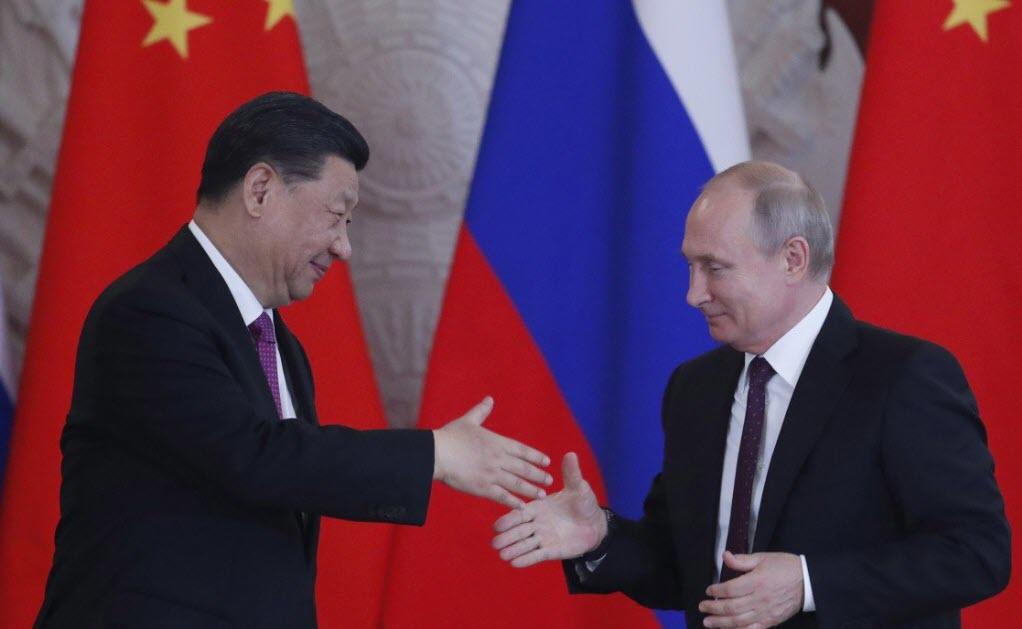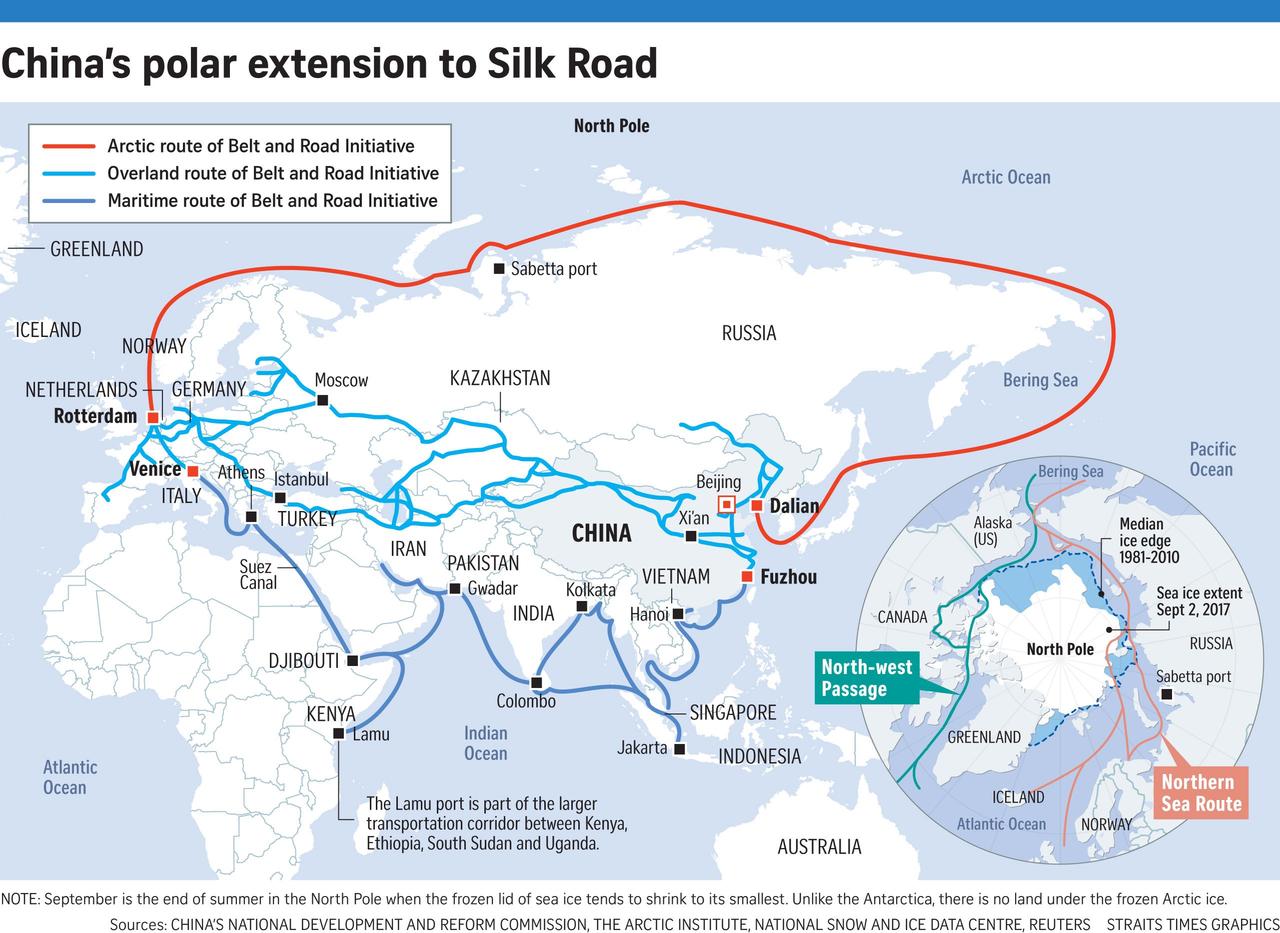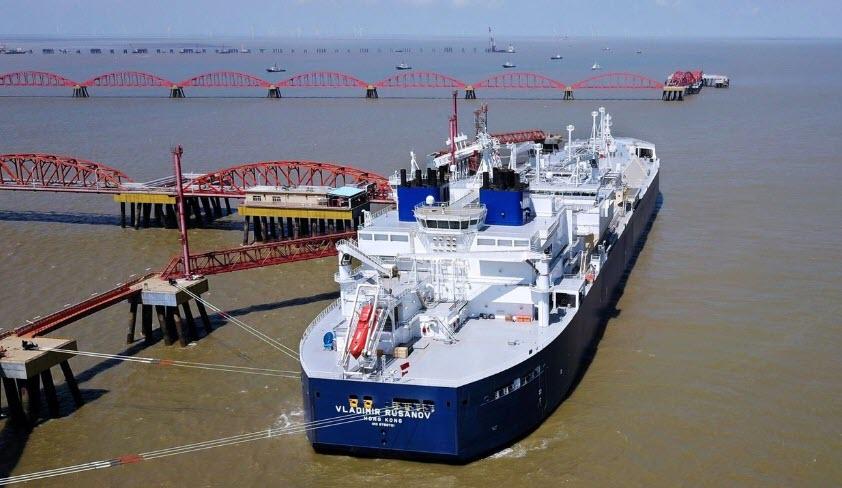
Just this month, Chinese President Xi Jinping made his eighth official visit to Russia in a trip highly publicized in both Russian and Chinese media. “This year marks the 70th anniversary of our diplomatic ties and China’s ties with Russia are deepening at a time of profound change in the global geopolitical landscape,” remarked former Chinese ambassador to Britain Ma Zhengang, as quoted by the South China Morning Post.

One of the most current examples of this newly strengthened relationship between Beijing and Moscow is a new joint venture between state-owned shipping corporations in Russia and China to create a “Polar Silk Road” in the Arctic Sea. a year ago, officials in Beijing announced that China would be pursuing investment across the Arctic Route to encourage commercial shipping through the northern passage as a part of the country’s Belt and Road Initiative. Belt and Road is a massive undertaking involving investments programs worth trillions of dollars, which will go toward connecting Asia and Europe by sea, rail, and road to promote more trade between the continents.

This week, reporting by the Wall Street Journal this week tells us that “China is breaking into Arctic transport through a joint venture between the country’s biggest ocean carrier, Cosco Shipping Holdings Co., and its Russian counterpart PAO Sovcomflot to move natural gas from Siberia to Western and Asian markets.” Both China and Russia are members of the Arctic Council, which the Wall Street Journal describes as “an intergovernment forum [...] which considers development issues and sailing rights as the polar ice recedes” before going on to say that China, in particular, has “made investment [in Arctic shipping lanes] a priority to advance its energy and shipping interests”.

The new venture will ship liquefied natural gas from central northern Siberia’s gargantuan Yamal LNG project to a laundry list of destinations including Northern Europe, Japan, South Korea, and China. The initiative will begin with a fleet of a dozen ice-breaking tankers, and Cosco’s China Shipping LNG Investment Co. will reportedly operate another nine tankers.
"We [China] imported about 57 million tons of LNG last year and we are looking for a steady supply of around four million a year coming from Yamal,” a Chinese shipping executive told the Wall Street Journal.This move comes on the back of months of Russian gas flooding European markets, keeping gas prices low, exacerbating an already-existing gas glut in the continent, and at least partially edging the United States out of the European natural gas market. As reported by Bloomberg, experts at Citigroup surmise that Russia’s increased shipments of natural gas to Europe are a kind of stress test for the United States. A Citigroup report says that Russia is intentionally keeping gas prices low because Moscow is likely “testing the response of the global gas market in a low price environment, especially U.S. LNG export elasticity.”
“We also look to move container ships through the northern sea route as warming temperatures melt the ice making it easier to navigate.”
Now that Russia is strengthening its natural gas trade with China on top of its aggressive flooding of European markets with its cheap liquefied natural gas, the United States has more cause for concern than ever. Especially when taking into consideration that China’s thirst for natural gas is “almost infinite” as it tries to move away from its long legacy of dirty coal-based power and its middle class continues to boom, along with its demand for energy.




